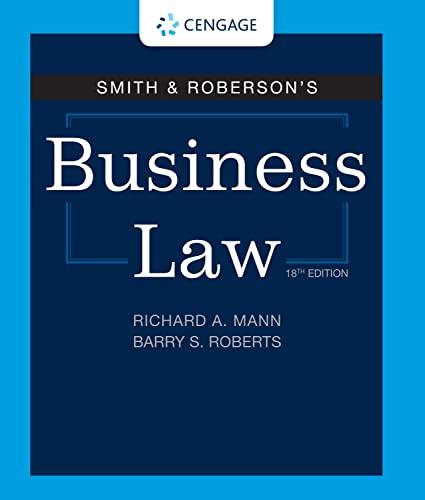Question
In 1975, a landmark federal law was passed called the Education for All Handicapped Children Act, commonly known as PL 94-142; it has been revised
In 1975, a landmark federal law was passed called the Education for All Handicapped Children Act, commonly known as PL 94-142; it has been revised several times and was reauthorized in 2004 as the Individuals with Disabilities Education Improvement Act (IDEIA), although we continue to refer to it as IDEA. Using the chart on page 13 of the text, identify two major provisions of IDEA and explain how they are addressed in Illinois Education today.
Chart:
Focus On The Major Provisions of IDEA Each state and locality must have a plan to ensure*:
Identification Extensive efforts to screen and identify all children and youths with disabilities.
Free Appropriate Public Education (FAPE) Every student with a disability has an appropriate public education at no cost to the parents or guardian.
Due Process The student's and parents' rights to information and informed consent before the student is evaluated, labeled, or placed, and the right to an impartial due process hearing if they disagree with the school's decisions.
Parent/Guardian Surrogate Consultation The student's parents (or guardian) are consulted about the student's evaluation and placement and the educational plan; if the parents (or guardian) are unknown or unavailable, a surrogate parent must be found to act for the student.
Least Restrictive Environment (LRE) The student is educated in the least restrictive environment consistent with his or her educational needs and, insofar as possible, with students without disabilities.
Individualized Education Program (IEP) A written individualized education program is prepared for each student with a disability, including levels of functioning, long-term goals, extent to which the student will not participate in the general education classroom and curriculum, services to be provided, plans for initiating and evaluating the services, and needed transition services (from school to work or continued education). Parents must be invited to the meeting and efforts made to enable them to attend.
Nondiscriminatory Evaluation The student is evaluated in all areas of suspected disability and in a way that is not biased by his or her language or cultural characteristics or disabilities. Evaluation must be by a multidisciplinary team, and no single evaluation procedure may be used as the sole criterion for placement or planning.
Confidentiality The results of evaluation and placement are kept confidential, though the student's parents (or guardian) may have access to the records.
Personnel Development, In-service Training for teachers and other professional personnel, including in-service training for general education teachers, in meeting the needs of students with disabilities.
*Detailed federal rules and regulations govern the implementation of each of these major provisions. The Code of Federal Regulations comprises the rules for implementation of the law.
Step by Step Solution
There are 3 Steps involved in it
Step: 1

Get Instant Access to Expert-Tailored Solutions
See step-by-step solutions with expert insights and AI powered tools for academic success
Step: 2

Step: 3

Ace Your Homework with AI
Get the answers you need in no time with our AI-driven, step-by-step assistance
Get Started


